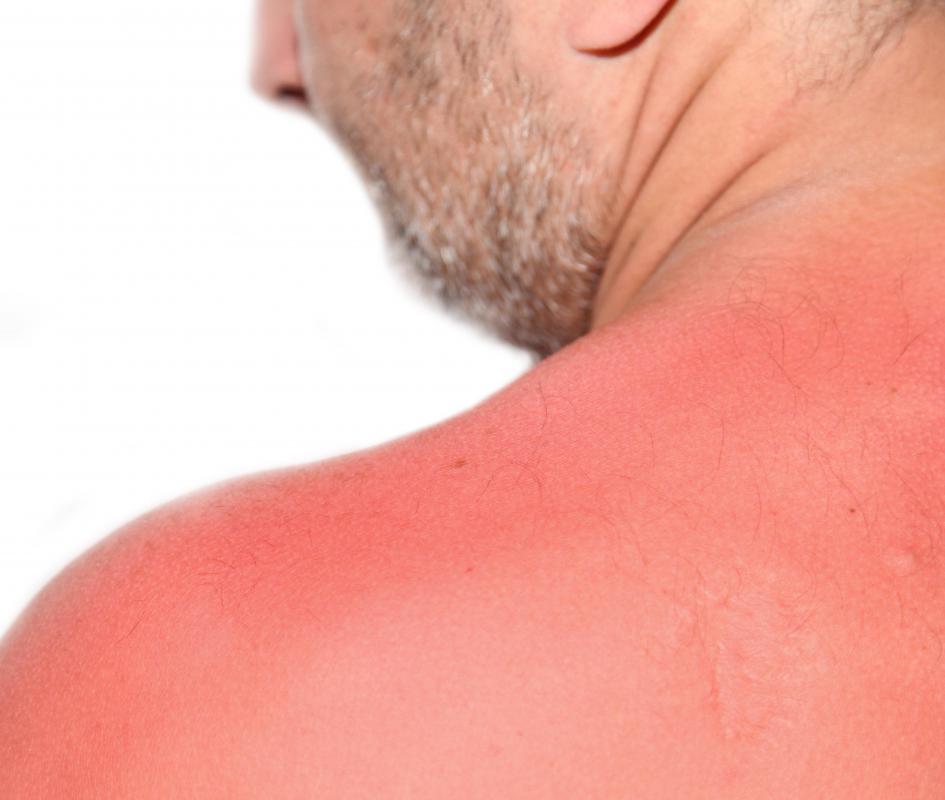At WiseGEEK, we're committed to delivering accurate, trustworthy information. Our expert-authored content is rigorously fact-checked and sourced from credible authorities. Discover how we uphold the highest standards in providing you with reliable knowledge.
What Is Ethanolamine?
Ethanolamine is an organic compound which contains both amine and alcohol chemical groups, making it useful in a variety of industrial applications including in the production of agricultural chemicals such as ammonia to synthesize pharmaceuticals and detergents. It is also toxic and corrosive upon exposure to human skin, despite being used in various cosmetics such as hair waving agents and soaps. At room temperature, ethanolamine takes on a thick, clear liquid form that is flammable, and has an odor like that of ammonia. The US Centers for Disease Control (CDC) classifies ethanolamine as having an Immediately Dangerous to Life or Health (IDLH) rating at 1,000 parts per million (ppm) concentration for skin exposure or 30 ppm for inhaled concentrations. There is a general consensus among many nations, however, from the US to the UK, Spain, Japan, and Malaysia that an exposure limit of 2-3 ppm should not be exceeded for ethanolamine.
Over a dozen other chemical trade names exist for ethanolamine due to its relation to similar industrial compounds, such as 2-aminoethanol, monoethanolamine which is known as ETA or MEA on some labels, 2-Amino-1-ethanol, Glycinol, and others. It is generally classed as a primary amine chemical but can also be labeled as a primary alcohol, and it is most frequently used as both an agricultural fungicide and microbicide in nations such as New Zealand. The capability of ethanolamine to bind to various other compounds makes it useful as a scrubbing agent to remove highly toxic hydrogen sulphide gas, H2S in crude oil production or carbon dioxide gas, CO2, in various industries. This also makes it useful as a binding agent in dry cleaning, wool treatment, and to enhance the performance characteristics of various paints and polishes.

Since ethanolamine poses serious risks to human health through corrosive skin burns, damage to the eyes, or through inhalation damage to the respiratory tract, it must be handled with caution. Research has shown that the ingestion of 150 grams (5.3 ounces) or more of ethanolamine is likely to be fatal. Vapors or mists of the compound can cause serious eye damage, with as little as 0.005 milliliters being shown to cause serious damage to vision in laboratory tests on rabbits. Prolonged human exposure to very low concentrations of the compound have also been shown to degrade teeth and jaw bones, as well as lead to respiratory ailments such as bronchial pneumonia, as well as have detrimental effects on the internal organs of the liver and kidneys. Exposure can also cause asthma reactions in susceptible individuals, and some animal research also suggests that it has toxic effects on unborn fetuses at low concentrations that otherwise do not affect the pregnant mother.

Due to the many uses of ethanolamine, it has been studied extensively by organizations in both the European Union, by the Food and Drug Administration (FDA) in the US, and elsewhere. Industrial restrictions on the compound and its use are limited, however. This is due to the fact that its health risks are primarily classified as an occupational hazard, and exposure must occur through direct physical contact or aerosolized form for it to pose any danger to health.
AS FEATURED ON:
AS FEATURED ON:














Discuss this Article
Post your comments